1889 is the crossroads where the descendants, living persons and ancestors of previous, current and future influencers meet on the chronological timeline of earth’s history.
It is where the explorers of mountains and lost civilizations and the discoverers of medicine and dinosaurs lived alongside one another.
Here are some of those people.
Note: Wikipedia is the source the Catholic Bard quotes directly for all the bio descriptions read in these articles.
This article is part of a series of Notable People Alive In 1889
Born in 1800’s
Goodyear’s Son
Charles Goodyear
(December 29, 1800 – July 1, 1860)
He was an American self-taught chemist and manufacturing engineer who developed vulcanized rubber, for which he received patent number 3633 from the United States Patent Office on June 15, 1844.
Goodyear is credited with inventing the chemical process to create and manufacture pliable, waterproof, moldable rubber.
Goodyear’s discovery of the vulcanization process followed five years of searching for a more stable rubber and stumbling upon the effectiveness of heating after Thomas Hancock. His discovery initiated decades of successful rubber manufacturing in the Lower Naugatuck Valley in Connecticut, as rubber was adopted to multiple applications, including footwear and tires. The Goodyear Tire and Rubber Company is named after (though not founded by) him.
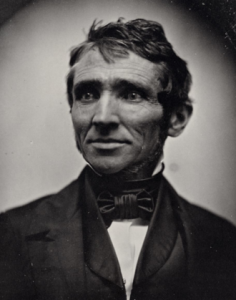
William Henry Goodyear (1846–1923)
He was a noted architectural historian, art historian, and museum curator.
Richard Owen
(July 20, 1804 – December 18, 1892)
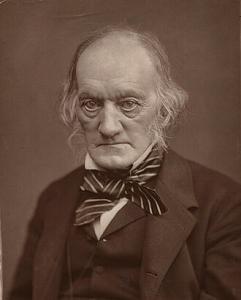
He was an English biologist, comparative anatomist and palaeontologist. Owen is generally considered to have been an outstanding naturalist with a remarkable gift for interpreting fossils.
Owen produced a vast array of scientific work, but is probably best remembered today for coining the word Dinosauria (meaning “Terrible Reptile” or “Fearfully Great Reptile”). An outspoken critic of Charles Darwin‘s theory of evolution by natural selection, Owen agreed with Darwin that evolution occurred but thought it was more complex than outlined in Darwin’s On the Origin of Species. Owen’s approach to evolution can be considered to have anticipated the issues that have gained greater attention with the recent emergence of evolutionary developmental biology.
Owen was the first president of the Microscopical Society of London in 1839 and edited many issues of its journal – then known as The Microscopic Journal. Owen also campaigned for the natural specimens in the British Museum to be given a new home. This resulted in the establishment, in 1881, of the now world-famous Natural History Museum in South Kensington, London. Bill Bryson argues that, “by making the Natural History Museum an institution for everyone, Owen transformed our expectations of what museums are for.”
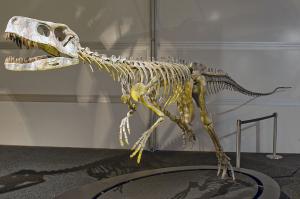
James Glaisher FRS
(April 7, 1809 – February 7, 1903)
He was an English meteorologist, aeronaut and astronomer.

Born in 1810’s
Singer Sewing Machine Inventor’s Wife
Isaac Singer
(October 27, 1811 – July 23, 1875)
He was an American inventor, actor, and businessman. He made important improvements in the design of the sewing machine and was the founder of what became one of the first American multi-national businesses, the Singer Sewing Machine Company
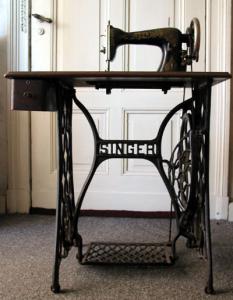
His wife was…
Isabella Eugénie Boyer
(December 17, 1841 – May 12, 1904)
She was a French-American model and heiress.
Johann Gottfried Galle
(June 9, 1812 – July 10, 1910)
He was a German astronomer from Radis, Germany, at the Berlin Observatory who, on 23 September 1846, with the assistance of student Heinrich Louis d’Arrest, was the first person to view the planet Neptune and know what he was looking at. Urbain Le Verrier had predicted the existence and position of Neptune, and sent the coordinates to Galle, asking him to verify. Galle found Neptune in the same night he received Le Verrier’s letter, within 1° of the predicted position. The discovery of Neptune is widely regarded as a dramatic validation of celestial mechanics, and is one of the most remarkable moments of 19th-century science.
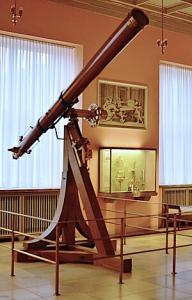
Joseph Glidden
(January 18, 1813 – October 9, 1906)
He was an American businessman and farmer. He was the inventor of the modern barbed wire. In 1898, he donated land for the Northern Illinois State Normal School in DeKalb, Illinois, which was renamed as Northern Illinois University in 1957.

Japetus Steenstrup
(March 8, 1813 – June 20, 1897)
Steenstrup was a Danish zoologist, biologist, and professor famous for naming and describing the giant squid ‘Architeuthis dux’ (‘ruling squid’) in 1857, previously famous in legend as the kraken. He also discovered the possibility of using the subfossils of the Postglacial period as a means of interpreting climate changes and corresponded with Charles Darwin about barnacles, sending information and specimens. In 1857, he was elected a foreign member of the Royal Swedish Academy of Sciences.Johannes Japetus Smith Steenstrup | Science Museum Group Collection
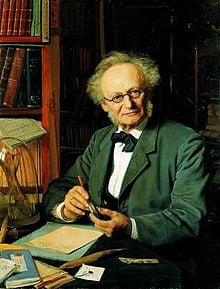
Christopher Latham Sholes
(February 14, 1819 – February 17, 1890)
He was an American inventor who invented the QWERTY keyboard, and, along with Samuel W. Soule, Carlos Glidden and John Pratt, has been contended to be one of the inventors of the first typewriter in the United States. He was also a newspaper publisher and Wisconsin politician.
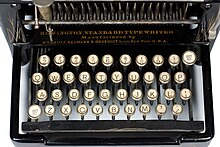
Born in 1820’s
Margaret P. Colvin
(October 9, 1820 – August 2, 1894)
She was a 19th-century inventor. She received four patents over her lifetime, all related to laundry improvements. Colvin’s most important invention was the Triumph Rotary Washer which she exhibited at the Philadelphia Centennial in 1876 and the Columbian Exposition in 1893.
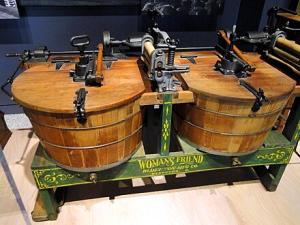
Birdsill Holly
(November 8, 1820 – April 27, 1894)
He was an American mechanical engineer and inventor of water hydraulics devices. He is known for inventing mechanical devices that improved city water systems and patented an improved fire hydrant that is similar to those used currently for firefighting. Holly was a co-inventor of the Silsby steam fire engine. He founded the Holly Manufacturing Company that developed into the larger Holly Steam Combination Company that distributed heat from a central station and developed commercial district heating for cities in the United States and Canada.
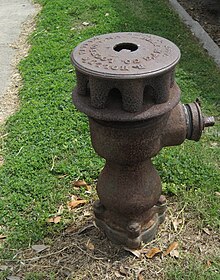
Hannibal Williston Goodwin
(April 30, 1822 – December 31, 1900)
He patented a method for making transparent, flexible roll film out of nitrocellulose film base, which was used in Thomas Edison‘s Kinetoscope, an early machine for viewing motion pictures.
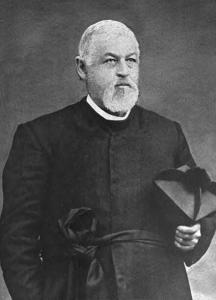
Louis Pasteur
(December 27, 1822 – September 28, 1895)
He was a French chemist, pharmacist, and microbiologist renowned for his discoveries of the principles of vaccination, microbial fermentation, and pasteurization, the last of which was named after him. His research in chemistry led to remarkable breakthroughs in the understanding of the causes and preventions of diseases, which laid down the foundations of hygiene, public health and much of modern medicine. Pasteur’s works are credited with saving millions of lives through the developments of vaccines for rabies and anthrax. He is regarded as one of the founders of modern bacteriology and has been honored as the “father of bacteriology” and the “father of microbiology“(together with Robert Koch; the latter epithet also attributed to Antonie van Leeuwenhoek).
In 1889 he is awarded the Cameron Prize for Therapeutics of the University of Edinburgh.
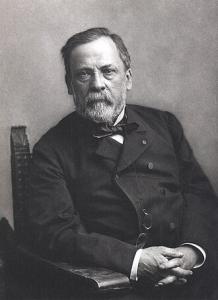
Joseph Augustus Seiss
(March 18, 1823 – June 20, 1904)
He was an American theologian and Lutheran minister known for his religious writings on pyramidology and dispensationalism. His book on the pyramid is considered a primary text of pyramidology. He wrote The Great Pyramid of Egypt, Miracle in Stone: Secrets and Advanced Knowledge (1877) The Pyramids of Egypt
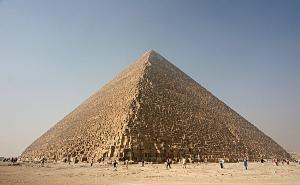
Father of the Computer’s Son
Charles Babbage
(December 26, 1791 –October 18, 1871)
He was an English polymath. A mathematician, philosopher, inventor and mechanical engineer, Babbage originated the concept of a digital programmable computer.
Babbage is considered by some to be “father of the computer“.He is credited with inventing the first mechanical computer, the Difference Engine, that eventually led to more complex electronic designs, though all the essential ideas of modern computers are to be found in his Analytical Engine, programmed using a principle openly borrowed from the Jacquard loom. Babbage had a broad range of interests in addition to his work on computers covered in his 1832 book Economy of Manufactures and Machinery. He was an important figure in the social scene in London, and is credited with importing the “scientific soirée” from France with his well-attended Saturday evening soirées.His varied work in other fields has led him to be described as “pre-eminent” among the many polymaths of his century.
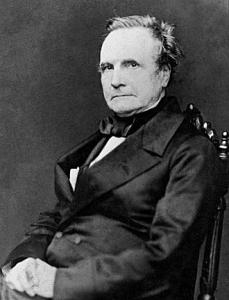
He was the father of
Henry Prevost Babbage
(1824 – 1918)
He was a soldier in the Bengal Army of the East India Company. After retiring with the rank of major general, he continued the work of his father, Charles Babbage, whom he had assisted as a student. He organised and edited his father’s papers and prototypes and arranged for their publication and completion. These works included Babbage’s Calculating Engines (1889) and a working Analytical Engine Mill – a simplified portion of the full Analytical Engine design.
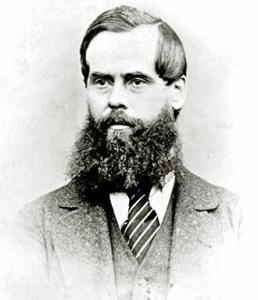
Pierre Jules César Janssen
(February 22, 1824 – December 23, 1907)
He was a French astronomer who, along with English scientist Joseph Norman Lockyer, is credited with discovering the gaseous nature of the solar chromosphere, but there is no justification for the conclusion that he deserves credit for the co-discovery of the element helium.
Passage de Vénus is a series of photographs of the transit of the planet Venus across the Sun on 9 December 1874. They were purportedly taken in Japan by the French astronomer Jules Janssen and Brazilian engineer Francisco Antônio de Almeida using Janssen’s ‘photographic revolver‘.
It is the oldest “film” listed on IMDb and Letterboxd.
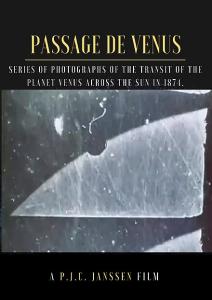
Thomas Henry Huxley
(May 4, 1825 – June 29, 1895)
He was an English biologist and anthropologist who specialized in comparative anatomy. He has become known as “Darwin’s Bulldog” for his advocacy of Charles Darwin‘s theory of evolution.
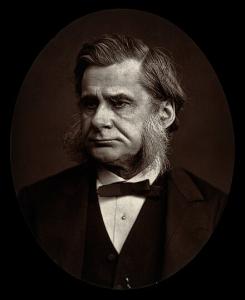
Armand David, CM
(September 7, 1826 – 10 November 1900)
He was a Lazarist missionary Catholic priest as well as a zoologist and a botanist. Several species, such as Père David’s deer, are named after him — Père David being French for Father David.
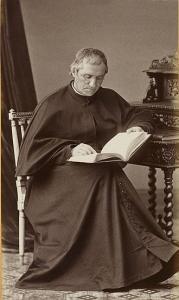
The West first learned of the giant panda on March 11, 1869, when Fr. David received a skin from a hunter. The first Westerner known to have seen a living giant panda is the German zoologist Hugo Weigold (May 27, 1886 – July 9, 1973) , who purchased a cub in 1916.

Samuel Colt’s Wife
Samuel Colt
(July 19, 1814 – January 10, 1862)
He was an American inventor, industrialist, and businessman who established Colt’s Patent Fire-Arms Manufacturing Company and made the mass production of revolvers commercially viable.
Colt’s first two business ventures were producing firearms in Paterson, New Jersey, and making underwater mines; both ended in disappointment. His business affairs improved rapidly after 1847, when the Texas Rangers ordered 1,000 revolvers during the American war with Mexico. Later, his firearms were used widely during the settling of the western frontier. Colt died in 1862 as one of the wealthiest men in America.
Colt’s manufacturing methods were sophisticated. His use of interchangeable parts helped him become one of the first to use the assembly line efficiently. Moreover, his innovative use of art, celebrity endorsements, and corporate gifts to promote his wares made him a pioneer of advertising, product placement, and mass marketing.
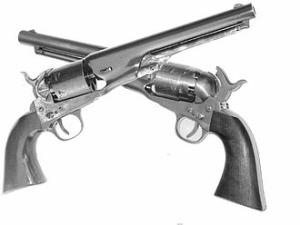
His wife was
Elizabeth Jarvis Colt
(October 5, 1826 – August 23, 1905)
Following her husband’s death in 1862, Mrs. Colt inherited a controlling interest in the manufacturing company (worth $3.5 million at the time, or $107 million, adjusted for inflation to 2023 dollars), and played a key role in rebuilding the main armory following arson in 1864. She sold her interest in Colt’s Manufacturing Company in 1901. She was involved in society life in Hartford, CT and President of the Hartford Women’s Auxiliary.

Martha Coston
(December 12, 1826 – July 9, 1904)
She was an American inventor and businesswoman who invented the Coston flare, a device for signaling at sea, and the owner of the Coston Manufacturing Company.
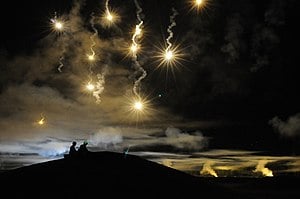
Philip Sclater
(November 4, 1829 – June 27, 1913)
He was an English lawyer and zoologist. In zoology, he was an expert ornithologist, and identified the main zoogeographic regions of the world. He was Secretary of the Zoological Society of London for 42 years, from 1860 to 1902.
Animals named by Sclater
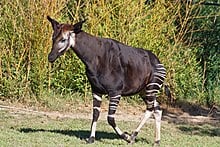
Animals named after Sclater
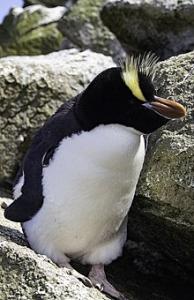
Born in 1830’s
Inventor of Electricity’s Family
Michael Faraday
(September 22, 1791 – August 25, 1867)
Michael Faraday is one of the most famous scientists of modern times. Often referred to as being the man who ‘invented’ electricity, Faraday was the first person to discover electromagnetic induction in 1831, the principle behind the electric transformer and generator. The BBC website notes this discovery “was crucial in allowing electricity to be transformed from a curiosity into a powerful new technology.” He is also famous enough to appear on the back of English £20 notes.
As a chemist, Faraday discovered benzene, investigated the clathrate hydrate of chlorine, invented an early form of the Bunsen burner and the system of oxidation numbers, and popularised terminology such as “anode“, “cathode“, “electrode” and “ion“. Faraday ultimately became the first and foremost Fullerian Professor of Chemistry at the Royal Institution, a lifetime position.
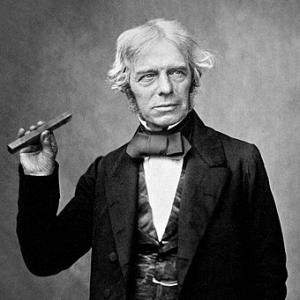
He is the brother of Margaret (Faraday) Barnard (1802-1862)
She is the mother of Margaret (Barnard) Blaikley (1830-1910)
Étienne-Jules Marey
(March 5, 1830 – May 15, 1904)
He was a French scientist, physiologist and chronophotographer.
His work was significant in the development of cardiology, physical instrumentation, aviation, cinematography and the science of laboratory photography. He is widely considered to be a pioneer of photography and an influential pioneer of the history of cinema. He was also a pioneer in establishing a variety of graphical techniques for the display and interpretation of quantitative data from physiological measurement.
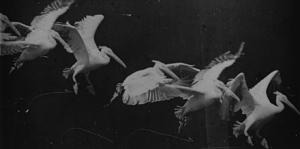
Eadweard Muybridge
(April 9, 1830 – May 8, 1904)
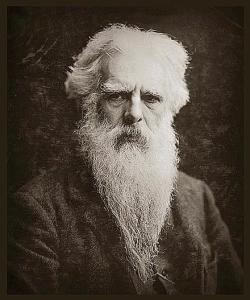
He was an English photographer known for his pioneering work in photographic studies of motion, and early work in motion-picture projection.
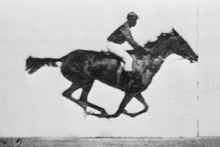
Gold Rush Discover’s Sister
James W. Marshall
(October 8, 1810 – August 10, 1885)
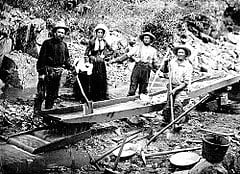
He was an American carpenter and sawmill operator, who on January 24, 1848, reported the finding of gold at Coloma, California, a small settlement on the American River about 36 miles northeast of Sacramento. His discovery was the impetus for the California Gold Rush. The mill property was owned by Johann (John) Sutter who employed Marshall to build his mill. The wave of gold seekers turned everyone’s attention away from the mill which eventually fell into disrepair and was never used as intended. Neither Marshall nor Sutter ever profited from the gold find.
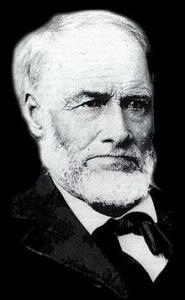
He is the brother of
Abigail Stone (Marshall) (1830 – 1896)
Paul Belloni Du Chaillu
(July 31, 1831 (disputed) – April 29, 1903)
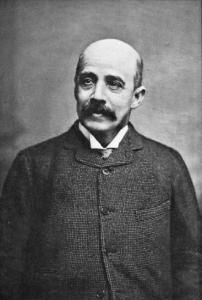
He was a French-American traveler, zoologist, and anthropologist. He became famous in the 1860s as the first modern European outsider to confirm the existence of gorillas, and later the Pygmy people of central Africa. He later researched the prehistory of Scandinavia.
The First Mountain gorilla (archive.org)
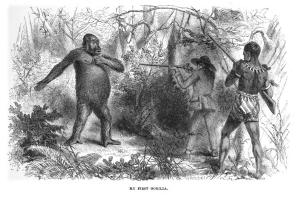 Drawing of Du Chaillu at close quarters with a gorilla
Drawing of Du Chaillu at close quarters with a gorilla
His 1889 work The Viking Age, also in two volumes, was a very broad study of the early history, manners, and customs of the ancestors of the English-speaking nations.
George Everest’s Daughter
George Everest
(July 4, 1790 – December 1, 1866)
He was a British surveyor and geographer who served as Surveyor General of India from 1830 to 1843.
In 1865, the Royal Geographical Society renamed Peak XV – at the time only recently identified as the world’s highest peak – to Mount Everest in his honour. George Everest had no direct connection with the mountain which bears his name, which he never saw. He was, however, responsible for hiring Andrew Scott Waugh, who made the first formal observations of the mountain, and Radhanath Sikdar, who calculated its height. Before its significance was realised, Mount Everest was originally known as Peak “B” and later as Peak XV.
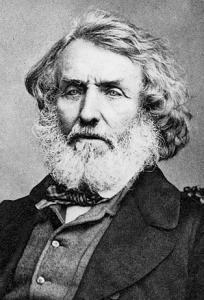
Mary Everest Boole
(March 11, 1832 – May 17, 1916)
She was a self-taught mathematician who is best known as an author of didactic works on mathematics, such as Philosophy and Fun of Algebra, and as the wife of fellow mathematician George Boole (November 2, 1815 – December 8, 1864). Her progressive ideas on education, as expounded in The Preparation of the Child for Science, included encouraging children to explore mathematics through playful activities such as curve stitching. Her life is of interest to feminists as an example of how women made careers in an academic system that did not welcome them.
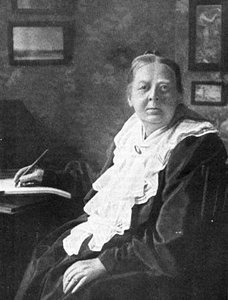
Alfred Nobel
(October 21, 1833 – December 10, 1896)
He was a Swedish chemist, inventor, engineer and businessman. He is known for inventing dynamite as well as having bequeathed his fortune to establish the Nobel Prizes. He also made several important contributions to science, holding 355 patents in his lifetime.
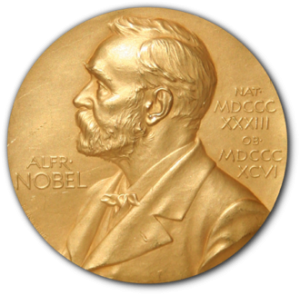
Dmitri Mendeleev
(February 8, 1834 – February 2, 1907)
He was a Russian chemist and inventor. He is best known for formulating the Periodic Law and creating a version of the periodic table of elements. He used the Periodic Law not only to correct the then-accepted properties of some known elements, such as the valence and atomic weight of uranium, but also to predict the properties of three elements that were yet to be discovered (germanium, gallium and scandium).
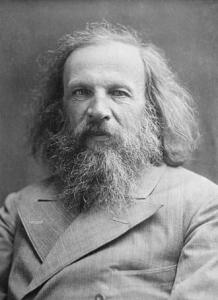
John Wesley Powell
(March 24, 1834 – September 23, 1902)
He was an American geologist, U.S. Army soldier, explorer of the American West, professor at Illinois Wesleyan University, and director of major scientific and cultural institutions. He is famous for his 1869 geographic expedition, a three-month river trip down the Green and Colorado rivers, including the first official U.S. government-sponsored passage through the Grand Canyon.
Powell was appointed by US President James A. Garfield to serve as the second director of the U.S. Geological Survey (1881–1894) and proposed, for development of the arid West, policies that were prescient for his accurate evaluation of conditions. Two years prior to his service as director of the U.S. Geological Survey, Major Powell had become the first director of the Bureau of Ethnology at the Smithsonian Institution where he supported linguistic and sociological research and publications.
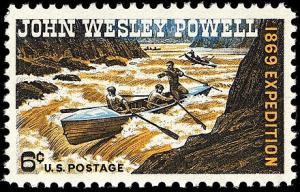
John Ritty
(October 29, 1836 – March 29, 1918)
He was a saloonkeeper and inventor, opened his first saloon in Dayton, Ohio in 1871, billing himself as a “Dealer in Pure Whiskies, Fine Wines, and Cigars.” Some of Ritty’s employees would take the customers’ money that was meant to pay for the food, drink, and other wares. In 1878 while on a steamboat trip to Europe, Ritty became intrigued by a mechanism that counted how many times the ship’s propeller went around. He wondered whether something such as this could be made to record the cash transactions made at his saloon.
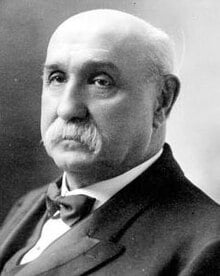
As soon as he got home to Dayton, Ritty and his brother John, a skilled mechanic, began working on a design for such a device. After several failed prototypes, they created their third design, operated by pressing a key that represented a specific amount of money. There was no cash drawer. James and John Ritty patented the design on November 4, 1879, as “Ritty’s Incorruptible Cashier”.
The Rittys opened a small factory in Dayton to manufacture cash registers while still operating the saloon. The company did not prosper and in 1881, James Ritty became overwhelmed with the responsibilities of running two businesses, and sold all his interests in the cash register business.The buyers were a group of investors including Jacob H. Eckert of Cincinnati, a china and glassware salesman who formed the National Manufacturing Company, and John and Frank Patterson, who were then in the coal and railroad business. John H. Patterson became majority owner in 1884, when the company was renamed The National Cash Register Company.

John Wesley Hyatt
(November 28, 1837 – May 10, 1920)
He was an American inventor. He is mainly known for simplifying the production of celluloid.
Hyatt, a Perkin Medal recipient, is included in the National Inventors Hall of Fame. He had nearly 238 patents to his credit, including improvements to sugar cane mills and water filtration devices.
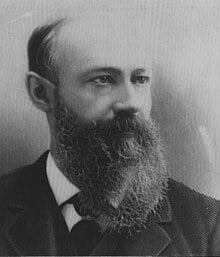
Ferdinand von Zeppelin,
(July 8, 1838 – March 8, 1917)
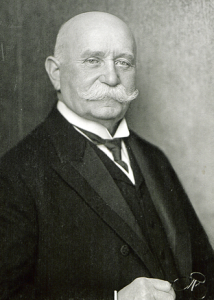
He was a German general and later inventor of the Zeppelin rigid airships. His name became synonymous with airships and dominated long-distance flight until the 1930s. He founded the company Luftschiffbau Zeppelin.
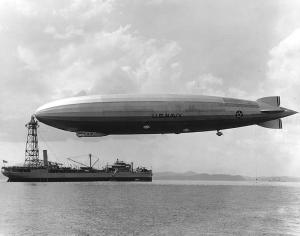
The USS Los Angeles, a United States Navy airship built in Germany by the Luftschiffbau Zeppelin (Zeppelin Airship Company)
Sarah ‘Sallie’ Lockwood Winchester
( 1839 – September 5, 1922)
She was an American heiress who amassed great wealth after the death of her husband, William Wirt Winchester, and her mother in law, Jane Ellen Hope.
Winchester has become known for the construction of Llanada Villa which, six months after her death was turned into a tourist attraction now known as the Winchester Mystery House. Testimonies and records from those who knew her describe her as intelligent, kind, a savvy financial manager, and not superstitious, remaining sharp-witted even into old age. However, in the years since her death, she has been depicted in popular culture as guilt-ridden, mad with grief, and delirious in her later life.
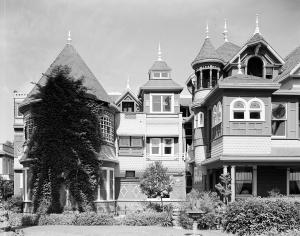
Born in 1840’s
John Boyd Dunlop
(February 5, 1840 – October 23, 1921)
He was a Scottish inventor and veterinary surgeon who spent most of his career in Ireland. Familiar with making rubber devices, he invented the first practical pneumatic tyres for his child’s tricycle and developed them for use in cycle racing.
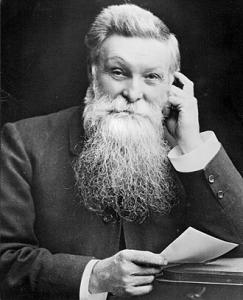
Hiram Maxim
(February 5, 1840 – November 24 1916)
He was an American-born British inventor best known as the creator of the first automatic machine gun, the Maxim gun. Maxim held patents on numerous mechanical devices such as hair-curling irons, a mousetrap, and steam pumps. Maxim laid claim to inventing the lightbulb.
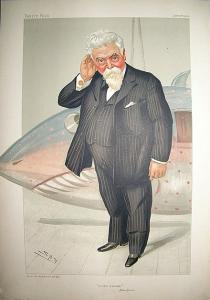
Sir Henry Morton Stanley,
(January 28, 1841 – May 10, 1904)
He was a Welsh-American explorer, journalist, soldier, colonial administrator, author and politician who was famous for his exploration of Central Africa and his search for missionary and explorer David Livingstone.
Stanley found David Livingstone on November 10, 1871 in Ujiji, near Lake Tanganyika in present-day Tanzania. He later claimed to have greeted him with the now-famous line, “Dr. Livingstone, I presume?” However, this line does not appear in his journal from the time—the two pages directly following the recording of his initial spotting of Livingstone were torn out of the journal at some point—and it is likely that Stanley simply embellished the pithy line sometime afterwards.
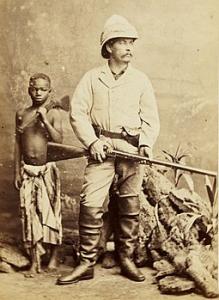
John Philip Holland
(February 24, 1841 – August 12, 1914)
He was an Irish-American marine engineer who developed the first submarine to be formally commissioned by the US Navy, and the first Royal Navy submarine, Holland 1.
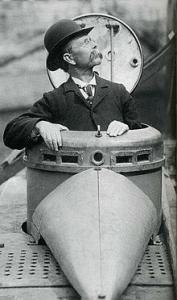
Charles Darwin (February 12, 1809 – April 19, 1882)
+ Emma Wedgwood. (May 2, 1808 – October 2, 1896)
= Henrietta Emma Litchfield Darwin
(September 25, 1843 –December 17, 1927)
Henrietta was born at Down House, Downe, Kent, in 1843. She was Darwin’s third daughter and the eldest daughter to reach adulthood after the eldest, Annie, died aged 10, and a second daughter, Mary, died before she was a month old. She and her brother Frank helped their father with his work, and Henrietta helped edit The Descent of Man.

Robert Koch
(December 11, 1843 – May 27, 1910)
He was a German physician and microbiologist. As the discoverer of the specific causative agents of deadly infectious diseases including tuberculosis, cholera and anthrax, he is regarded as one of the main founders of modern bacteriology. As such he is popularly nicknamed the father of microbiology (with Louis Pasteur), and as the father of medical bacteriology. His discovery of the anthrax bacterium (Bacillus anthracis) in 1876 is considered as the birth of modern bacteriology. Koch used his discoveries to establish that germs “could cause a specific disease” and directly provided proofs for the germ theory of diseases, therefore creating the scientific basis of public health,saving millions of lives. For his life’s work Koch is seen as one of the founders of modern medicine.
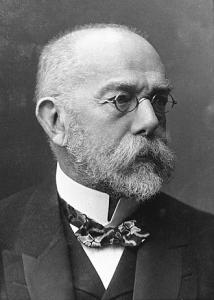
Wilhelm Röntgen
(March 27, 1845 – February 10, 1923)
He was a German mechanical engineer and physicist, who, on 8 November 1895, produced and detected electromagnetic radiation in a wavelength range known as X-rays or Röntgen rays, an achievement that earned him the inaugural Nobel Prize in Physics in 1901. In honour of Röntgen’s accomplishments, in 2004 the International Union of Pure and Applied Chemistry (IUPAC) named element 111, roentgenium, a radioactive element with multiple unstable isotopes, after him. The unit of measurement roentgen was also named after him.
In 1888, he obtained the physics chair at the University of Würzburg,

Alfred Giles
(February 18, 1846 – March 20, 1931)
He was born in Datchet, England, was a South Australian bushman, drover and explorer who crossed Australia from south to north seven times, mostly in connection with the building of the Overland Telegraph Line 1870–1872.
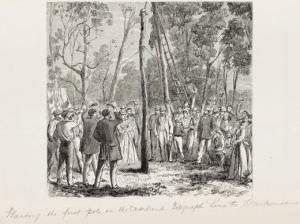
David Misell
(1846 – Nov 2 1920)
He was a British inventor and inventor of the flashlight.
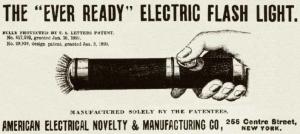
Thomas Edison
(February 11, 1847 – October 18, 1931)
He was an American inventor and businessman. He developed many devices in fields such as electric power generation, mass communication, sound recording, and motion pictures. These inventions, which include the phonograph, the motion picture camera, and early versions of the electric light bulb, have had a widespread impact on the modern industrialized world. He was one of the first inventors to apply the principles of organized science and teamwork to the process of invention, working with many researchers and employees. He established the first industrial research laboratory
October 6, 1889 – A judge ruled that Thomas Edison’s electric light improvement claim for “a filament of carbon of high resistance” was valid. To avoid a possible court battle with yet another competitor, Joseph Swan, who held an 1880 British patent on a similar incandescent electric lamp, he and Swan formed a joint company called Ediswan to manufacture and market the invention in Britain.
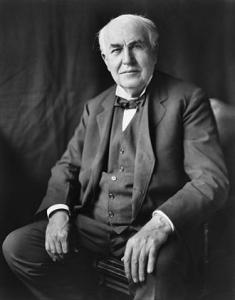
Alexander Graham Bell
(March 3, 1847 – August 2, 1922)
He was a Scottish-born Canadian-American inventor, scientist, and engineer who is credited with patenting the first practical telephone. He also co-founded the American Telephone and Telegraph Company (AT&T) in 1885.n,jb.kk.j
In 1885 Alexander Graham Bell had built a large house, christened The Lodge on an estate on a point across from Baddeck, overlooking Bras d’Or Lake. in Nova Scotia Canada. He and his wife had started vacationing in Canada back in 1885. Bell had been granted the Patton for the telephone back in 1876 when The Adventures of Tom Sawyer was first published.
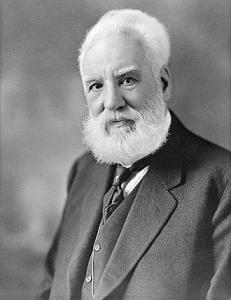
LaMarcus Adna Thompson
(March 8, 1848 – May 8, 1919)
He was an American inventor and He businessman most famous for developing a variety of gravity rides and roller coasters.
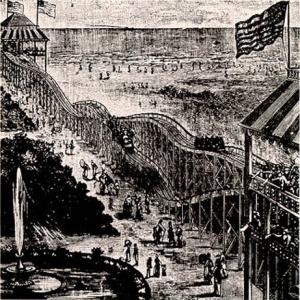
Lewis Howard Latimer,
(September 4, 1848 – December 11, 1928)
He was an American inventor and patent draftsman. His inventions included an evaporative air conditioner, an improved process for manufacturing carbon filaments for light bulbs, and an improved toilet system for railroad cars. In 1884, he joined the Edison Electric Light Company where he worked as a draftsman. The Lewis H. Latimer House, his landmarked former residence, is located near the Latimer Projects at 34-41 137th Street in Flushing, Queens, New York City.
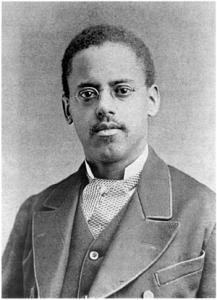
James M. Spangler,
(November 20, 1848 – January 23, 1915)
He was an American inventor, salesman, and janitor who invented the first commercially successful portable electric vacuum cleaner that revolutionized household carpet cleaning. His device was not the first vacuum cleaner, but it was the first that was practical for home use. It was the first to use both a cloth filter bag and cleaning attachments. Spangler improved this basic model and received a patent for it in 1908. He formed the Electric Suction Sweeper Company to manufacture his device. William H. Hoover was so impressed with the vacuum cleaner that he bought into Spangler’s business and patents.
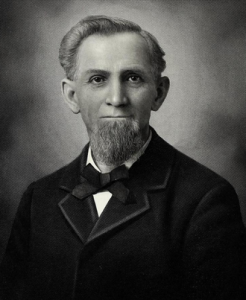
Aleksandr Loran
(1849 – c. 1911)
He was a teacher and inventor of fire fighting foam and foam extinguishers. He lived in the Russian Empire…
He was born in Kishinev, Russian Empire (now Moldova). After graduating from the Saint Petersburg Polytechnical Institute, he continued his education in Paris, where he studied chemistry.
Returning to Russia, Loran became a teacher in a school in Baku, which was the main center of the Russian oil industry at that time. Impressed by the terrible and hardly extinguishable oil fires that he had seen there, Loran tried to find such a liquid substance that could deal effectively with the problem. He invented fire fighting foam, which was successfully tested in several experiments in 1902-1903. In 1904 Loran patented his invention, and developed the first foam extinguisher the same year.
Subsequently, he founded a company called Eurica, based in Saint Petersburg, and started to sell his fire extinguishers under that brand.
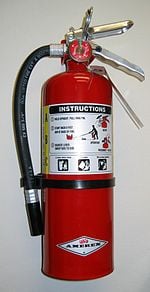
William Henry “Boss” Hoover
(Aug. 18, 1849. – Feb. 25, 1932.)
The inventor of the Vacuum Cleaner James M. Spangler gave one of these Suction Sweepers to his cousin, Susan Hoover, who used it at her home. Impressed with the machine, she told her husband and son about it. William Henry “Boss” Hoover and son, Herbert W. Hoover, Sr., were leather-goods manufacturers in North Canton, which at the time was called New Berlin. Hoover’s leather goods business was threatened by the introduction of the motor car. Seeing in the Suction Sweeper a marketing opportunity, Hoover bought the patent from Spangler in 1908 and retained Spangler as company Superintendent, on royalties in the new business. Spangler continued to contribute to the company, patenting several further Suction Sweeper designs, before his death in 1915. His family continued to receive royalties from his original patent until 1925. Family tree of W. H. “Boss” HOOVER – Geneastar
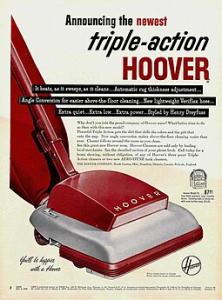
Born in 1850’s
Karl Ferdinand Braun.
(June 6, 1850 – April 20, 1918)
He was a German electrical engineer, inventor, physicist and Nobel laureate in Physics. Braun contributed significantly to the development of the radio, when he invented the phased array antenna in 1905, which led to the development of radar, smart antennas, MIMO and the television by building the first cathode-ray tube. Braun also built the first semiconductor.
He shared the 1909 Nobel Prize in Physics with Guglielmo Marconi “for their contributions to the development of wireless telegraphy”, was a founder of Telefunken, one of the pioneering communications and television companies, and has been both called the “father of television” (shared with inventors like Paul Gottlieb Nipkow), “great grandfather of every semiconductor ever manufactured” and the co-father of the radio telegraphy, together with Marconi.
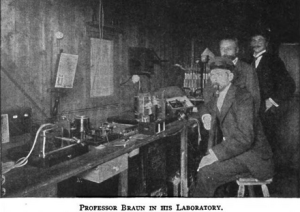
Samuel Morse’s Daughter
Samuel Morse
(April 27, 1791 – April 2, 1872)
He was an American inventor and painter. After establishing his reputation as a portrait painter, Morse, in his middle age, contributed to the invention of a single-wire telegraph system based on European telegraphs. He was a co-developer of Morse code in 1837 and helped to develop the commercial use of telegraphy.
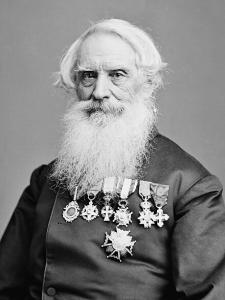
Together with his wife
Sarah Elizabeth (Griswold) Morse (abt.1827-1875)
They were the parents of
Cornelia Livingston Breese (Morse) Rummel (1851-1937)
Pierre Savorgnan de Brazza
(January 26, 1852 – September 14, 1905)
He was an Italian-French explorer. With his family’s financial help, he explored the Ogooué region of Central Africa, and later with the backing of the Société de Géographie de Paris, he reached far into the interior along the right bank of the Congo River. He has often been depicted as a man of friendly manner, great charm and peaceful approach towards the Africans he met and worked with on his journeys, but recent research has revealed that he in fact alternated this kind of approach with more calculated deceit and at times relentless armed violence towards local populations. Under French colonial rule, the capital of the Republic of the Congo was named Brazzaville after him and the name was retained by the post-colonial rulers, one of the few African nations to do so.
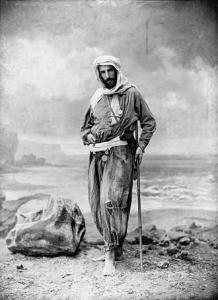
Sony Creator’s Family Tree
Ibuka Kajinosuke 井深 梶之助,
(July 4, 1854 – June 24, 1940)
He was a Japanese samurai of the late Edo period, who became a Christian during the Meiji period. He was born in Aizu, and fought in the Boshin War. In his adult life, he also became an ordained minister, and was an educator.
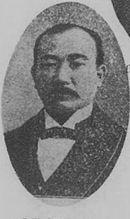
His ancestral family were chief retainers of the Aizu Domain, and his relatives include
Yae Ibuka
(October 23, 1897 – May 15, 1989)
She was a Japanese nurse who worked with patients who had leprosy. She was diagnosed as having leprosy, and hospitalized at Koyama Fukusei Hospital in 1919. It proved a misdiagnosis three years later, but she was deeply impressed by Drouart de Lézey, the director of the hospital, and was determined to work as a nurse with leprosy patients. In 1961, she was awarded the Florence Nightingale Medal.
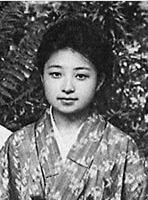
Masaru Ibuka (井深 大
(April 11, 1908 – December 19, 1997)
He was a Japanese electronics industrialist and co-founder of Sony, along with Akio Morita (January 26, 1921 – October 3, 1999)

George Eastman
(July 12, 1854 – March 14, 1932)
He was an American entrepreneur who founded the Eastman Kodak Company and helped to bring the photographic use of roll film into the mainstream. After a decade of experiments in photography, he patented and sold a roll film camera, making amateur photography accessible to the general public for the first time. Working as the treasurer and later president of Kodak, he oversaw the expansion of the company and the film industry.
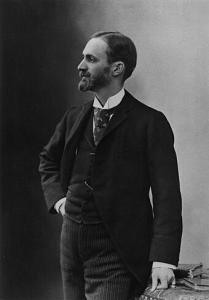
John Browning
(January 23, 1855 – November 26, 1926)
He was an American firearm designer who developed many varieties of military and civilian firearms, cartridges, and gun mechanisms, many of which are still in use around the world. He made his first firearm at age 13 in his father’s gun shop and was awarded the first of his 128 firearm patents on October 7, 1879, at the age of 24. He is regarded as one of the most successful firearms designers of the 19th and 20th centuries and a pioneer of modern repeating, semi-automatic, and automatic firearms.
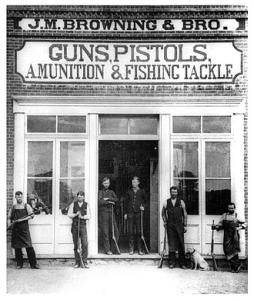
Percival Lowell
(March 13, 1855 – November 12, 1916)
He was an American businessman, author, mathematician, and astronomer who fueled speculation that there were canals on Mars, and furthered theories of a ninth planet within the Solar System. He founded the Lowell Observatory in Flagstaff, Arizona, and formed the beginning of the effort that led to the discovery of Pluto 14 years after his death.

Anthony Francis Lucas
(September 9, 1855 – September 2, 1921)
He was a Croatian-born American oil explorer. With Pattillo Higgins, he organized the drilling of an oil well near Beaumont, Texas, that became known as Spindletop. This led to the widespread exploitation of oil and the start of the Petroleum Age.
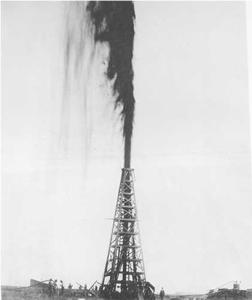
Granville Woods
(April 23, 1856 – January 30, 1910)
He was an American inventor who held more than 50 patents in the United States. He was the first African American mechanical and electrical engineer after the Civil War. Self-taught, he concentrated most of his work on trains and streetcars. One of his inventions is the Synchronous Multiplex Railway Telegraph, a variation of the induction telegraph that relied on ambient static electricity from existing telegraph lines to send messages between train stations and moving trains.
Granville T. Woods invented and patented Tunnel Construction for the electric railroad system, electrical rollercoasters and multiple newspapers referred to him as the “Black Edison”.
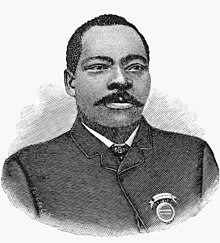
Robert Peary
(May 6, 1856 – February 20, 1920)
He was an American explorer and officer in the United States Navy who made several expeditions to the Arctic in the late 19th and early 20th centuries. He was long credited as being the discoverer of the geographic North Pole in April 1909, having led the first expedition to have claimed this achievement, although it is now considered unlikely that he actually reached the Pole.
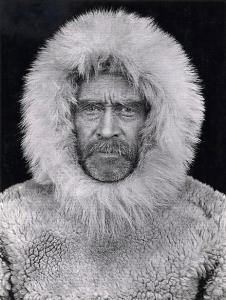
Nikola Tesla
(July 10, 1856 – January 7, 1943)
He was a Serbian-American engineer, futurist, and inventor. He is known for his contributions to the design of the modern alternating current (AC) electricity supply system.
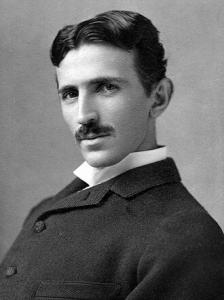
William Seward Burroughs I
(January 28, 1857 – September 14, 1898)
The American Arithmometer Company was an American manufacture organized in St. Louis, Missouri in 1886 by William S. Burroughs that produced adding machines.
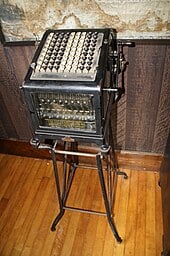
Heinrich Rudolf Hertz
(February 22, 1857 – January 1, 1894)
He was a German physicist who first conclusively proved the existence of the electromagnetic waves predicted by James Clerk Maxwell‘s equations of electromagnetism. The unit of frequency, cycle per second, was named the “Hertz” in his honor.
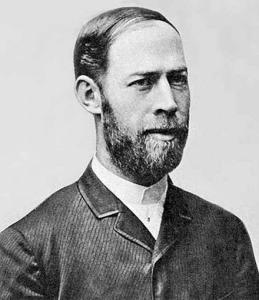
Charles Seeberger
(May 14, 1857 – September 13, 1931)
He was an American inventor. In 1899, he joined the Otis Elevator Company. The Seeberger-Otis partnership produced the first step-type escalator made for public use, and it was installed at the Paris Exhibition of 1900, where it won first prize. Mr. Seeberger eventually sold his patent rights to Otis in 1910.
Otis has installed elevators in some of the world’s most famous structures, including the world’s tallest:
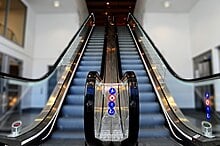
John Joseph Montgomery
(February 15, 1858 – October 31, 1911)
He was an American inventor, physicist, engineer, and professor at Santa Clara University in Santa Clara, California, who is best known for his invention of controlled heavier-than-air flying machines.
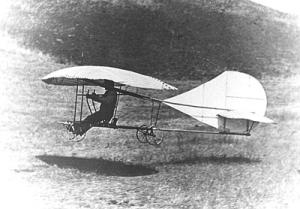
Harry Johnston
(June 12, 1858 – July 31, 1927)
He was a British explorer, botanist, artist, colonial administrator, and linguist who travelled widely across Africa to speak some of the languages spoken by people on that continent. He published 40 books on subjects related to the continent of Africa and was one of the key players in the Scramble for Africa that occurred at the end of the 19th century.
Harry Johnston is commemorated in the scientific names of the okapi, Okapia johnstoni, and of two species of African lizards, Trioceros johnstoni and Latastia johnstonii.
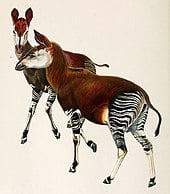
George Curzon, 1st Marquess Curzon of Kedleston
( January 11, 1859 – March 20, 1925)
Styled The Honourable between 1858 and 1898, then known as The Lord Curzon of Kedleston between 1898 and 1911, and The Earl Curzon of Kedleston between 1911 and 1921, was a prominent British statesman, Conservative politician and writer who served as Viceroy of India from 1899 to 1905.
Curzon had travelled around the world: Russia and Central Asia (1888–1889); Persia (September 1889 – January 1890); Siam, French Indochina, China, Korea and Japan (1892); and a daring foray into Afghanistan and the Pamirs (1894–1895). He published several books describing central and eastern Asia and related foreign policy issues. A bold and compulsive traveller, driven by orientalism, he was awarded the Patron’s Medal of the Royal Geographical Society for his exploration of the source of the Amu Darya (Oxus). His journeys allowed him to study the problems of Asia and their implications for British India, while reinforcing his pride in his nation and her imperial mission.
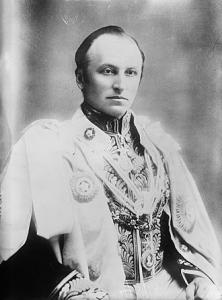
SIT Founder’s Daughter
Edwin Augustus Stevens
(July 28, 1795 – August 7, 1868)
He was an American engineer, inventor, and entrepreneur who left a bequest that was used to establish the Stevens Institute of Technology.
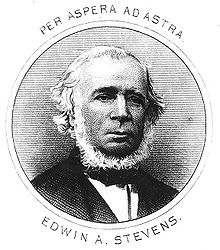
His daughter was
Caroline Bayard Stevens Wittpenn
(November 21, 1859 – December 4, 1932)
She was a social reformer and welfare worker from Hoboken, New Jersey. She directed several welfare organizations in New Jersey in the early twentieth century, and she worked within the state’s government to promote welfare-related causes. She also campaigned to establish Clinton Farms Reformatory, the first dedicated women’s prison in New Jersey, and led its board of managers for nearly twenty years.
Born in 1860’s
Bill Gates Family Tree
William Henry Gates (1860 – 1926) begot
+ William Henry Gates, Sr. (1891 – 1969) who begot
= Bill Gates Sr.
November 30, 1925 – September 14, 2020),
He was an American attorney, philanthropist, and civic leader. He was the founder of the law firm Shidler McBroom & Gates (a predecessor of K&L Gates), and also served as president of both the Seattle King County and Washington State Bar associations. He was the father of
Bill Gates,
(born October 28, 1955)
He is an American business magnate best known for co-founding the software company Microsoft with his childhood friend Paul Allen. During his career at Microsoft, Gates held the positions of chairman, chief executive officer (CEO), president, and chief software architect, while also being its largest individual shareholder until May 2014. He was a pioneer of the microcomputer revolution of the 1970s and 1980s.
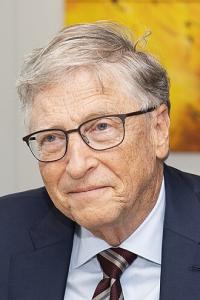
John Scott Haldane
(May 2, 1860 –March 14/15, 1936)

He was a British physician physiologist and philosopher famous for intrepid self-experimentation which led to many important discoveries about the human body and the nature of gases. He also experimented on his son, the celebrated and polymathic biologist J. B. S. Haldane, even when he was quite young. Haldane locked himself in sealed chambers breathing potentially lethal cocktails of gases while recording their effect on his mind and body.
In May 1915 he designed the Black Veil Respirator.
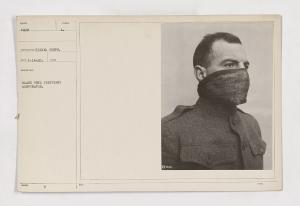
Paul Gottlieb Nipkow
(August 22, 1860 – August 24, 1940)
He was a German technician and inventor. He invented the Nipkow disk, which laid the foundation of television, since his disk was a fundamental component in the first televisions. Hundreds of stations experimented with television broadcasting using his disk in the 1920s and 1930s, until it was superseded by all-electronic systems in the 1940s.
Nipkow has been called the “father of television”, together with other early figures of television history like Karl Ferdinand Braun.
The first regular television service in the world, Fernsehsender Paul Nipkow, was named in his honour.
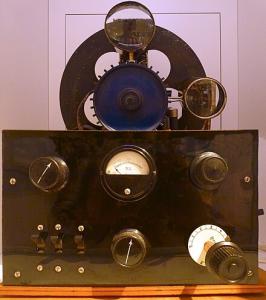
Karl Elsener (inventor)
(October 9, 1860 –December 26, 1918)
He was a Swiss cutler, inventor and entrepreneur.
Karl Elsener completed an apprenticeship as a knife maker in Zug. After some journeyman years he opened a factory in Ibach, Switzerland in 1884 for the manufacture of knives and surgical instruments.
During the late 1880s, the Swiss Army decided to purchase a new folding pocket knife for their soldiers. This knife was to be suitable for use by the army in opening canned food and for maintenance of the Swiss service rifle, the Schmidt–Rubin, which required a screwdriver for assembly and disassembly.
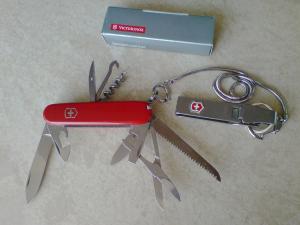
Karl started production of the Swiss army knife in Switzerland in 1891 and developed his knife manufacturing company into what has become Victorinox.
The term “Swiss Army knife” was coined by American soldiers after World War II after they had trouble pronouncing the German word “Offiziersmesser“, meaning “officer’s knife”.
The Swiss Army knife has been present in space missions carried out by NASA since the late 1970s.
The term “Swiss Army knife” has acquired usage as a figure of speech indicating a multifaceted skillset .In both the original television series MacGyver as well as its 2016 reboot, character Angus MacGyver frequently uses different Swiss Army knives in various episodes to solve problems and construct simple objects.
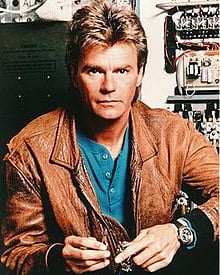
Nathan Beverly Stubblefield
(November 22, 1860 – March 28, 1928)
He was an American inventor best known for his wireless telephone work. Self-described as a “practical farmer, fruit grower and electrician”, he received widespread attention in early 1902 when he gave a series of public demonstrations of a battery-operated wireless telephone, which could be transported to different locations and used on mobile platforms such as boats. While this initial design employed conduction, in 1908 he received a U.S. patent for a wireless telephone system that used magnetic induction. However, he was ultimately unsuccessful in commercializing his inventions. He later went into seclusion, and died alone in 1928.
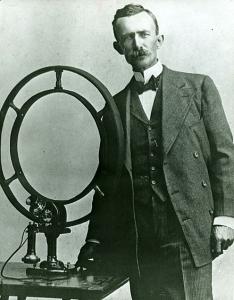
(November 22, 1860 – March 28, 1928
Fridtjof Nansen
(October 10, 1861 –13, May 1930)
He was a Norwegian polymath and Nobel Peace Prize laureate. He gained prominence at various points in his life as an explorer, scientist, diplomat, humanitarian and co-founded the Fatherland League.
He led the team that made the first crossing of the Greenland interior in 1888, traversing the island on cross-country skis. He won international fame after reaching a record northern latitude of 86°14′ during his Fram expedition of 1893–1896. Although he retired from exploration after his return to Norway, his techniques of polar travel and his innovations in equipment and clothing influenced a generation of subsequent Arctic and Antarctic expeditions. He was elected an International Member of the American Philosophical Society in 1897.
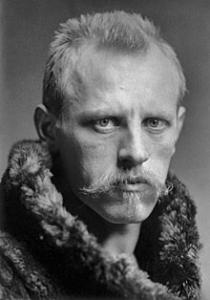
Mary Kingsley,
(October 13, 1862 – June 3, 1900)
He was an English ethnographer, writer and explorer who made numerous travels through West Africa and wrote several books on her experiences there. Historians have credited Kingsley’s work with helping to shape Western perceptions of the culture of Africa and colonialism
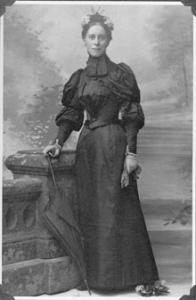
Margaret Murray
( July 13, 1863 –November 13, 1963)
She was an Anglo-Indian Egyptologist, archaeologist, anthropologist, historian, and folklorist. The first woman to be appointed as a lecturer in archaeology in the United Kingdom, she worked at University College London (UCL) from 1898 to 1935. She served as president of the Folklore Society from 1953 to 1955, and published widely over the course of her career.
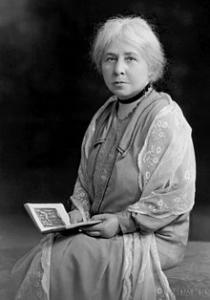
Leo Baekeland
(November 14, 1863 – February 23, 1944)
He was a Belgian chemist. Educated in Belgium and Germany, he spent most of his career in the United States. He is best known for the inventions of Velox photographic paper in 1893, and Bakelite in 1907. He has been called “The Father of the Plastics Industry” for his invention of Bakelite, an inexpensive, non-flammable and versatile plastic, which marked the beginning of the modern plastics industry.
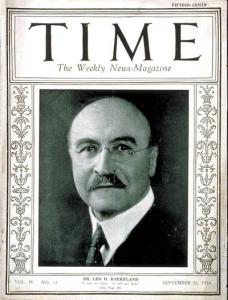
Steve Jobs Family Tree
Rudolph Carl Jobs (1864-1934) was the father of
Edwin Albert Jobs (1897-1974) was the father of
Paul Reinhold Jobs (1922-1993) was the father of
Steve Jobs
(February 24, 1955 – October 5, 2011)
He was an American businessman, inventor, and investor best known for co-founding the technology company Apple Inc. Jobs was also the founder of NeXT and chairman and majority shareholder of Pixar. He was a pioneer of the personal computer revolution of the 1970s and 1980s, along with his early business partner and fellow Apple co-founder Steve Wozniak.

Nellie Bly,
(May 5, 1864 – January 27, 1922)
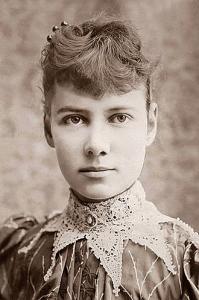
She was an American journalist, who was widely known for her record-breaking trip around the world in 72 days in emulation of Jules Verne‘s fictional character Phileas Fogg, and an exposé in which she worked undercover to report on a mental institution from within. She was a pioneer in her field and launched a new kind of investigative journalism.
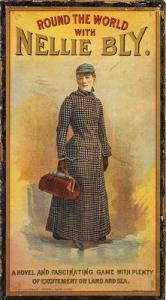
Television’s Creator’s Parents
Lewis Edwin Farnsworth (1865–1924)
+ Serena Amanda Bastian (1880–1960)
= Philo Farnsworth
(August 19, 1906 – March 11, 1971)
He was an American inventor and television pioneer. He made the critical contributions to electronic television that made possible all the video in the world today. He is best known for his 1927 invention of the first fully functional all-electronic image pickup device (video camera tube), the image dissector, as well as the first fully functional and complete all-electronic television system. Farnsworth developed a television system complete with receiver and camera—which he produced commercially through the Farnsworth Television and Radio Corporation from 1938 to 1951, in Fort Wayne, Indiana.
In later life, Farnsworth invented a small nuclear fusion device, the Farnsworth Fusor, employing inertial electrostatic confinement (IEC). Like many fusion devices, it was not a practical device for generating nuclear power, although it provides a viable source of neutrons. The design of this device has been the inspiration for other fusion approaches, including the Polywell reactor concept. Farnsworth held 300 patents, mostly in radio and television.
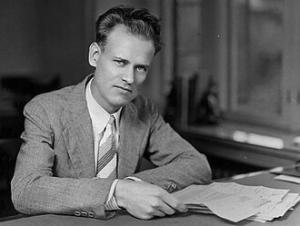
Matthew Henson
(August 8, 1866 – March 9, 1955)
He was an African American explorer who accompanied Robert Peary on seven voyages to the Arctic over a period of nearly 23 years. They spent a total of 18 years on expeditions together. He is best known for his participation in the 1908–1909 expedition that claimed to have reached the geographic North Pole on April 6, 1909. Henson said he was the first of their party to reach the North Pole.
Henson was born in Nanjemoy, Maryland, to sharecropper parents who were free Black Americans before the Civil War. He spent most of his early life in Washington, D.C., but left school at the age of twelve to work as a cabin boy. He later returned to Washington and worked as a salesclerk at a department store. One of his customers was Robert Peary, who in 1887 hired him as a personal valet. At the time, Peary was working on the Nicaragua Canal.
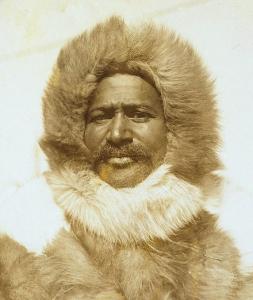
Friedrich Robert von Beringe
(September 21, 1865 –July 5, 1940)
He was a Imperial German Army officer, born in Aschersleben. Captain von Beringe, together with a physician, Dr. Engeland, a Corporal Ehrhardt, and twenty local troops with equipment and native porters left Usumbura (modern Bujumbura) in German East Africa on August 19, 1902. Their destination was the King Yuhi V Musinga of Rwanda. They then headed north to the volcanic Virunga Mountains. On October 17, 1902 he shot two large apes that were unknown to science at the time. He sent them to the Natural History Museum in Berlin, where they were examined and documented by Paul Matschie. The species was named Gorilla beringei in his honor, a gorilla species distinct from the previously discovered western gorilla (“Gorilla gorilla”). This new species, commonly called “eastern gorilla“, was later determined to consist of two subspecies: the mountain gorilla (Gorilla beringei beringei) and the eastern lowland gorilla (Gorilla beringei graueri).
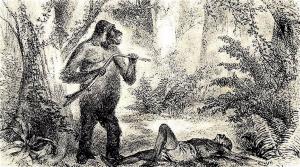
Gustav Adolf von Götzen
(May 12 1866 – December 1, 1910)
He was a German explorer, colonial administrator, and military officer who served as Reichskommissar of German East Africa. He came to Rwanda in 1894 becoming the second European to enter the territory, since Oscar Baumann’s brief expedition in 1892, and later, he became the first European to cross the entire territory of Rwanda.
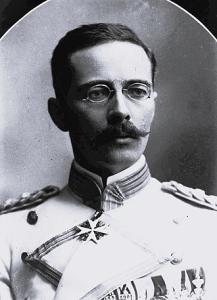
Reginald Fessenden
(October 6, 1866 – July 22, 1932)
He was a Canadian-born American inventor who received hundreds of patents in various fields, most notably ones related to radio and sonar.
Fessenden is best known for his pioneering work developing radio technology, including the foundations of amplitude modulation (AM) radio. His achievements included the first transmission of speech by radio (1900), and the first two-way radiotelegraphic communication across the Atlantic Ocean (1906). In 1932 he reported that, in late 1906, he also made the first radio broadcast of entertainment and music, although a lack of verifiable details has led to some doubts about this claim.
He did a majority of his work in the United States and, in addition to his Canadian citizenship, claimed U.S. citizenship through his American-born father.
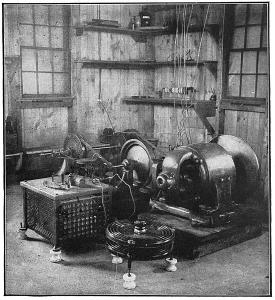
Sakichi Toyoda,
(1867 – October 30, 1930 )
He was a Japanese inventor and industrialist. He was born in Kosai, Shizuoka. The son of a farmer and sought-after carpenter, he started the Toyoda family companies. His son, Kiichiro Toyoda, would later establish Japan’s largest automaker, Toyota. Toyoda is referred to as the “King of Japanese Inventors”.
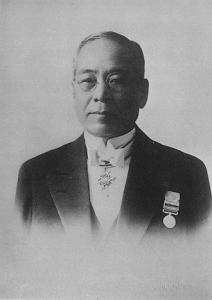
Charles Francis Jenkins
(August 22, 1867 – June 6, 1934)
He was an American engineer who was a pioneer of early cinema and one of the inventors of television, though he used mechanical rather than electronic technologies. His businesses included Charles Jenkins Laboratories and Jenkins Television Corporation (the corporation being founded in 1928, the year the Laboratories were granted the first commercial television license in the United States). Over 400 patents were issued to Jenkins, many for his inventions related to motion pictures and television.
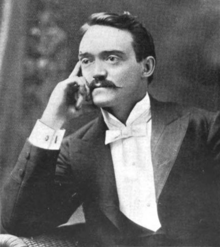
John Ostrom’s Parents
John Ostrom (1867-1915) is the father of
William Chalmers Ostrom (1901-1977) is the father of
John Ostrom
(February 18, 1928 – July 16, 2005)
He was an American paleontologist who revolutionized the modern understanding of dinosaurs. Ostrom’s work inspired what his pupil Robert T. Bakker has termed a “dinosaur renaissance“.
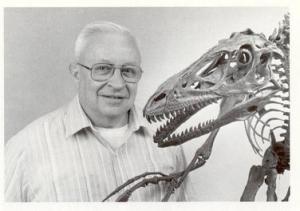
The Wright Brothers
Wilbur Wright (April 16, 1867 – May 30, 1912),
Orville Wright (August 19, 1871 – January 30, 1948)
THey were American aviation pioneers generally credited with inventing, building, and flying the world’s first successful airplane.[3][4][5] They made the first controlled, sustained flight of an engine-powered, heavier-than-air aircraft with the Wright Flyer on December 17, 1903, four miles (6 km) south of Kitty Hawk, North Carolina, at what is now known as Kill Devil Hills. In 1904 the Wright brothers developed the Wright Flyer II, which made longer-duration flights including the first circle, followed in 1905 by the first truly practical fixed-wing aircraft, the Wright Flyer III.
On July 4, 1889, Their Mother died.
Their dad Milton Wright (1828–1917) wrote in his diary, “…and thus went out the light of my home.” Milton continued to acknowledge her death in his diaries throughout the rest of his life, calling her “the sweetest spirit Earth ever knew.” On July 6, Susan was buried in what would become the family plot in Woodland Cemetery in Dayton.
Orville dropped out of high school after his junior year to start a printing business in 1889, having designed and built his own printing press with Wilbur’s help. Wilbur joined the print shop, and in March the brothers launched a weekly newspaper, the West Side News. Subsequent issues listed Orville as publisher and Wilbur as editor on the masthead.
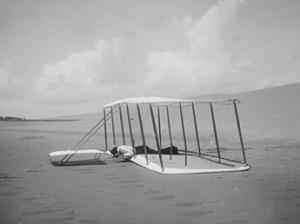
Percy Fawcett
DSO (August 18, 1867 – disappeared May 29, 1925)
He was a British geographer, artillery officer, cartographer, archaeologist, and explorer of South America. Fawcett disappeared in 1925 (along with his eldest son, Jack, and one of Jack’s friends, Raleigh Rimell) during an expedition to find an ancient lost city which he and others believed existed in the Amazon rainforest.

Marie Curie
(November 7, 1867 –July 4, 1934)
She was a Polish and naturalised-French physicist and chemist who conducted pioneering research on radioactivity. She was the first woman to win a Nobel Prize, the first person to win a Nobel Prize twice, and the only person to win a Nobel Prize in two scientific fields. Her husband, Pierre Curie, was a co-winner of her first Nobel Prize, making them the first married couple to win the Nobel Prize and launching the Curie family legacy of five Nobel Prizes. She was, in 1906, the first woman to become a professor at the University of Paris.
In 1889, she continued to educate herself, reading books, exchanging letters, and being tutored herself. In early 1889 she returned home to her father in Warsaw. She continued working as a governess and remained there until late 1891.
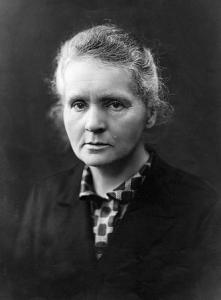
Robert Falcon Scott,
(June 6, 1868 – c. March 29, 1912)
He was a British Royal Navy officer and explorer who led two expeditions to the Antarctic regions: the Discovery expedition of 1901–04 and the Terra Nova expedition of 1910–13.

Gertrude Bell,
(July 14, 1868 –July 12, 1926)
She was an English writer, traveller, political officer, administrator, and archaeologist.British archaeologist, writer, spy and administrator; known as the “Uncrowned Queen of Iraq”

Born in 1870’s
Annie Londonderry
(1870 – November 11, 1947)
She was a Jewish Latvian immigrant to the United States who in 1894–95 became the first woman to bicycle around the world. After having completed her travel, albeit mostly by ship, she built a media career around engagement with popular conception of what it was to be female.
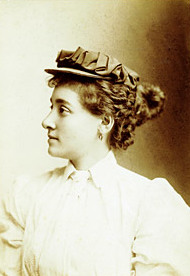
Walkie-Talkie Creator’s Parents
Arthur Lewes Hings (1870–Deceased)
Winifred Mary Jacques (1879–1968)
= Donald Lewes Hings
(November 6, 1907 – February 25, 2004)
He was a Canadian inventor, born in Leicester, England. In 1937 he created a portable radio signaling system for his employer CM&S, which he called a “packset”, but which later became known as the “Walkie-Talkie“.

Oppenheimer ‘s Parents
Julius Seligmann Oppenheimer (1871 – 1937)
+ Ella Oppenheimer (Friedman) (1869 – 1931)
= Robert Oppenheimer
(April 22, 1904 – February 18, 1967)
He was an American theoretical physicist who served as the director of the Manhattan Project‘s Los Alamos Laboratory during World War II. He is often called the “father of the atomic bomb” for his role in overseeing the development of the first nuclear weapons.
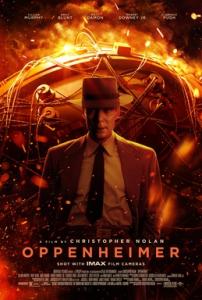
Elon Musk Family Tree
John Elon Haldeman (1871-1909) is the father of
Joshua Norman Haldeman D.C. (1902-1974) is the father of
Maye Musk
(born April 19, 1948)
She is a model and dietitian. She has been a model for 50 years, appearing on the covers of magazines, including a Time magazine health edition, Women’s Day, international editions of Vogue, and Sports Illustrated Swimsuit Issue. She holds Canadian, South African, and American citizenship. She is a registered dietitian and earned two masters degrees in diet and nutrition.
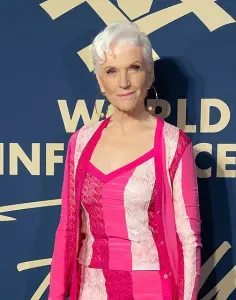
She is the mother of Kimbal Musk, Tosca Musk and
Elon Musk
(born June 28, 1971)
He is a businessman and investor known for his key roles in the space company SpaceX and the automotive company Tesla, Inc. Other involvements include ownership of X Corp., the company that operates the social media platform X (formerly known as Twitter), and his role in the founding of the Boring Company, xAI, Neuralink, and OpenAI. He is one of the wealthiest individuals in the world; as of August 2024 Forbes estimates his net worth to be US$247 billion.
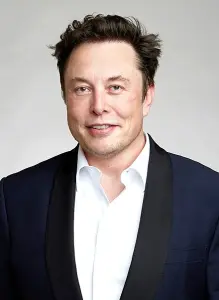
Ernst Stromer von Reichenbach
(June, 12, 1871 – December, 18, 1952)
He was a German paleontologist best remembered for his expedition to Egypt, during which the discovery of the first known remains of Spinosaurus and other extinct dinos were made.
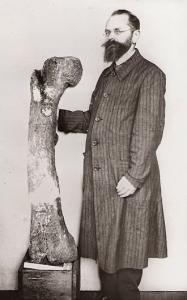
Roald Amundsen
(July 16, 1872 – c. June 18, 1928)
He was a Norwegian explorer of polar regions. He was a key figure of the period known as the Heroic Age of Antarctic Exploration.
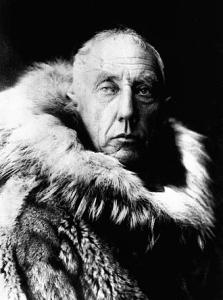
Internet Creator’s Parents
Joseph Parron Licklider (1873-1962)
+ Margaret Robnett (abt.1881-1977)
= J. C. R. Licklider
(March 11, 1915 – June 26, 1990),
“Lick“, was an American psychologist and computer scientist who is considered to be among the most prominent figures in computer science development and general computing history.
He is particularly remembered for being one of the first to foresee modern-style interactive computing and its application to all manner of activities; and also as an Internet pioneer with an early vision of a worldwide computer network long before it was built. He did much to initiate this by funding research that led to significant advances in computing technology, including today’s canonical graphical user interface, and the ARPANET, which is the direct predecessor of the Internet.
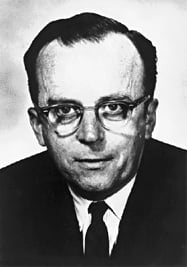
Barnum Brown
(February 12, 1873 – February 5, 1963),
Commonly referred to as Mr. Bones, was an American paleontologist. Named after the circus showman P. T. Barnum, he discovered the first documented remains of Tyrannosaurus during a career that made him one of the most famous fossil hunters working from the late Victorian era into the early 20th century.
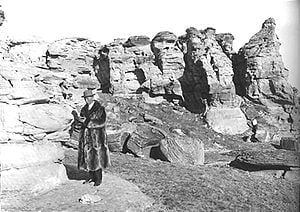
Lee de Forest
(August 26, 1873 – June 30, 1961)
He was an American inventor, electrical engineer and an early pioneer in electronics of fundamental importance. He invented the first practical electronic amplifier, the three-element “Audion” triode vacuum tube in 1906. This helped start the Electronic Age, and enabled the development of the electronic oscillator. These made radio broadcasting and long distance telephone lines possible, and led to the development of talking motion pictures, among countless other applications.
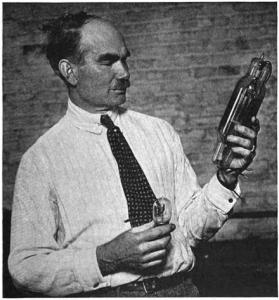
Sir Ernest Shackleton,
(February 15, 1874 – January 5, 1922)
He was an Anglo-Irish Antarctic explorer who led three British expeditions to the Antarctic. He was one of the principal figures of the period known as the Heroic Age of Antarctic Exploration.
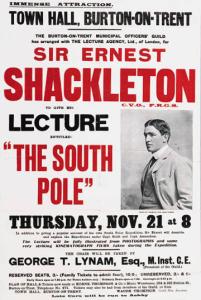
Guglielmo Marconi
(April 25, 1874 –July 20, 1937)
He was an Italian inventor, electrical engineer, physicist, and politician, known for his creation of a practical radio wave–based wireless telegraph system. This led to Marconi being credited as the inventor of radio, and winning the 1909 Nobel Prize in Physics with Karl Ferdinand Braun “in recognition of their contributions to the development of wireless telegraphy”. His work laid the foundation for the development of radio, television, and all modern wireless communication systems.
Marconi was also an entrepreneur, businessman, and founder of The Wireless Telegraph & Signal Company in the United Kingdom in 1897 (which became the Marconi Company). In 1929, Marconi was ennobled as a Marchese (marquis) by King Victor Emmanuel III of Italy, and, in 1931, he set up Vatican Radio for Pope Pius XI.
In 1889 at the age of 16, Guglielmo Marconi Sent a wireless electrical signal across his mother’s garden in Bologna, Italy.
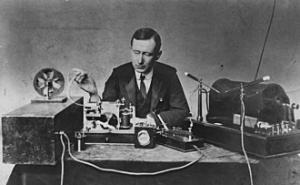
Howard Carter
(May 9, 1874 – March 2, 1939)
He was a British archaeologist and Egyptologist who discovered the intact tomb of the 18th Dynasty Pharaoh Tutankhamun in November 1922, the best-preserved pharaonic tomb ever found in the Valley of the Kings.
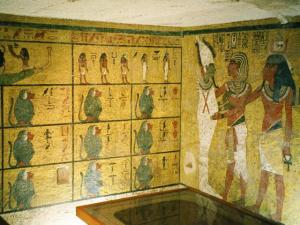
Charles C. Bass
(January 29, 1875 – August 25 1975)
He was an American medical doctor and researcher on tropical medicine who made significant contributions to understanding malaria, hookworm, and other diseases. Later Bass studied the relationship between dental health and general well-being. Bass articulated and promoted the “Bass Technique of Toothbrushing” and developed improved means of flossing teeth, for which some refer to Bass as “The Father of Preventive Dentistry”. He subsequently became a university administrator, serving as dean of the Tulane University School of Medicine, from 1922 to 1940.

Carl Emil Pettersson
(October 23, 1875 – May 12, 1937)
He was a Swedish sailor who became king of Tabar Island in Papua New Guinea after he was shipwrecked in 1904.
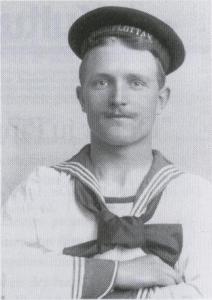
Hiram Bingham III
(November 19, 1875 – June 6, 1956)
He was an American academic, explorer and politician. In 1911, he publicized the existence of the Inca citadel of Machu Picchu which he rediscovered with the guidance of local indigenous farmers. Later, Bingham served as the 69th Governor of Connecticut for a single day in 1925—the shortest term in history. He had been elected in 1924 as governor, but was also elected to the Senate and chose that position. He served as a member of the United States Senate until 1933.

Edgar Evans
(March 7, 1876 – February 17, 1912)
He was a Welsh Royal Navy petty officer and member of the “Polar Party” in Robert Falcon Scott‘s ill-fated Terra Nova Expedition to the South Pole in 1911–1912. This group of five men, personally selected for the final expedition push, attained the Pole on 17 January 1912. The party perished as they attempted to return to the base camp.
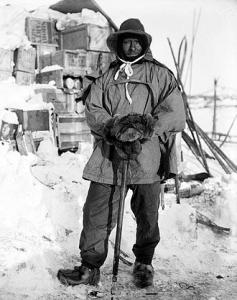
Garrett A. Morgan
(March 4, 1877 – July 27, 1963)
He was an American inventor, businessman, and community leader. His most notable inventions were a type of three-way traffic light, and a protective ‘smoke hood’ notably used in a 1916 tunnel construction disaster rescue. Morgan also discovered and developed a chemical hair-processing and straightening solution. He created a successful company called “G. A. Morgan Hair Refining Company” based on his hair product inventions along with a complete line of haircare products and became involved in the civic and political advancement of African Americans, especially in and around Cleveland, Ohio.
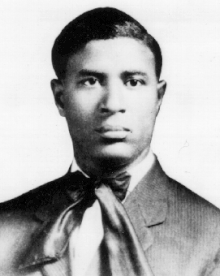
Leonhard Seppala
(September 14, 1877 – January 28, 1967)
He was a Norwegian-Kven-American sled dog breeder, trainer and musher who with his dogs played a pivotal role in the 1925 serum run to Nome, and participated in the 1932 Winter Olympics. Seppala introduced the work dogs used by Native Siberians at the time to the American public; the breed came to be known as the Siberian Husky in the English-speaking world. The Leonhard Seppala Humanitarian Award, which honors excellence in sled dog care, is named in honour of him.
DNA Discoverer’s Parents
Annie Elizabeth Wilkins (1878–1955)
+ Harry Crick (1887–1948)
= Francis Crick
(June 8, 1916 – July 28, 2004)
He was an English molecular biologist, biophysicist, and neuroscientist. He, James Watson, Rosalind Franklin, and Maurice Wilkins played crucial roles in deciphering the helical structure of the DNA molecule.
Crick and Watson’s paper in Nature in 1953 laid the groundwork for understanding DNA structure and functions. Together with Maurice Wilkins, they were jointly awarded the 1962 Nobel Prize in Physiology or Medicine “for their discoveries concerning the molecular structure of nucleic acids and its significance for information transfer in living material”.
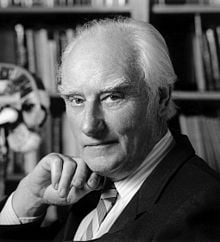
Otto Hahn
(March 8, 1879 – July 28, 1968)
He was a German chemist who was a pioneer in the fields of radioactivity and radiochemistry. He is referred to as the father of nuclear chemistry and discoverer of nuclear fission, the science behind nuclear reactors and nuclear weapons. Hahn and Lise Meitner discovered isotopes of the radioactive elements radium, thorium, protactinium and uranium. He also discovered the phenomena of atomic recoil and nuclear isomerism, and pioneered rubidium–strontium dating. In 1938, Hahn, Meitner and Fritz Strassmann discovered nuclear fission, for which Hahn alone was awarded the 1944 Nobel Prize in Chemistry.
Frederick William Wolf Jr.
(1879–1954)
DOMELRE (an acronym of Domestic Electric Refrigerator) was one of the first domestic electrical refrigerators, invented by Wolf in 1913 and produced starting in 1914 by Wolf’s Mechanical Refrigerator Company in Chicago. Several hundred units were sold, which made it the most commercially successful product out of several competing designs of its time. The unit replaced the block of ice in the icebox with an electrical-powered cooling device, and was completely automatic.
Often labelled as the “first electrical refrigerator” or similar, It has been described as “revolutionary” in the history of domestic refrigeration.
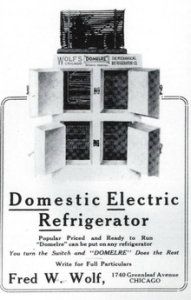
Max von Laue
(October 9, 1879 – April 24, 1960)
He was a German physicist who received the Nobel Prize in Physics in 1914 for his discovery of the diffraction of X-rays by crystals.
In addition to his scientific endeavors with contributions in optics, crystallography, quantum theory, superconductivity, and the theory of relativity, Laue had a number of administrative positions which advanced and guided German scientific research and development during four decades. A strong objector to Nazism, he was instrumental in re-establishing and organizing German science after World War II.

Neil Armstrong’s Family Tree
Martin August Engel (1879-1909)
+ Caroline Matilda “Callie” Katter Korspeter (1888-1970)
= Viola Louise Engel Armstrong (1907-1990)
Viola Louise Engel Armstrong
+ Stephen Koenig Armstrong (1907-1990)
= Neil Armstrong
(August 5, 1930 – August 25, 2012)
He was an American astronaut and aeronautical engineer who, in 1969, became the first person to walk on the Moon. He was also a naval aviator, test pilot, and university professor.
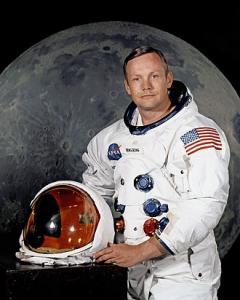
Born in 1880’s
Gideon Sundback
(April 24, 1880 – June 21, 1954)
He was a Swedish-American electrical engineer, who is most commonly associated with his work in the development of the zipper.
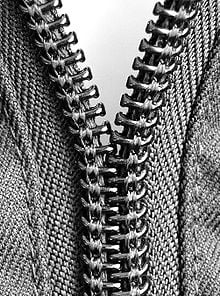
Alfred Wegener
November 1, 1880 – November 1930)
He was a German climatologist, geologist, geophysicist, meteorologist, and polar researcher.
During his lifetime he was primarily known for his achievements in meteorology and as a pioneer of polar research, but today he is most remembered as the originator of continental drift hypothesis by suggesting in 1912 that the continents are slowly drifting around the Earth (German: Kontinentalverschiebung).
His hypothesis was not accepted by mainstream geology until the 1950s, when numerous discoveries such as palaeomagnetism provided strong support for continental drift, and thereby a substantial basis for today’s model of plate tectonics.
Wegener was involved in several expeditions to Greenland to study polar air circulation before the existence of the jet stream was accepted. Expedition participants made many meteorological observations and were the first to overwinter on the inland Greenland ice sheet and the first to bore ice cores on a moving Arctic glacier.
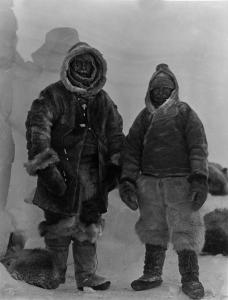
Alexander Fleming
(August 6, 1881 – March 11, 1955)
He was a Scottish physician and microbiologist, best known for discovering the world’s first broadly effective antibiotic substance, which he named penicillin. His discovery in 1928 of what was later named benzylpenicillin (or penicillin G) from the mould Penicillium rubens has been described as the “single greatest victory ever achieved over disease”.[3][4] For this discovery, he shared the Nobel Prize in Physiology or Medicine in 1945 with Howard Florey and Ernst Chain.
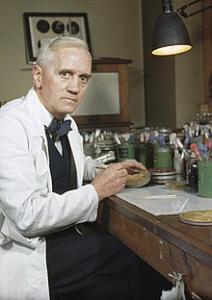
Frank Buck (animal collector)
(March 17, 1884 – March 25, 1950)
He was an American hunter, animal collector, and author, as well as a film actor, director, and producer. Beginning in the 1910s he made many expeditions into Asia for the purpose of hunting and collecting exotic animals, bringing over 100,000 live specimens back to the United States and elsewhere for zoos and circuses and earning a reputation as an adventurer. He co-authored seven books chronicling or based on his expeditions, beginning with 1930’s Bring ‘Em Back Alive, which became a bestseller.
Between 1932 and 1943 he starred in seven adventure films based on his exploits, most of which featured staged “fights to the death” with various wild beasts. He was also briefly a director of the San Diego Zoo, displayed wild animals at the 1933–34 Century of Progress exhibition and 1939 New York World’s Fair, toured with Ringling Bros. and Barnum & Bailey Circus, and co-authored an autobiography, 1941’s All in a Lifetime. The Frank Buck Zoo in Buck’s hometown of Gainesville, Texas, is named after him.
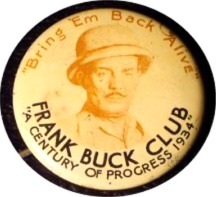
Umberto Nobile,
(January 21 1885 – 30 July 1978)
Nobile was a developer and promoter of semi-rigid airships in the years between the two World Wars. He is primarily remembered for designing and piloting the airship Norge, which may have been the first aircraft to reach the North Pole, and which was indisputably the first to fly across the polar ice cap from Europe to America. Nobile also designed and flew the Italia, a second polar airship; this second expedition ended in a deadly crash and provoked an international rescue effort.
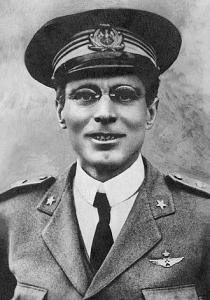
George Mallory –
(18 June 18, 1886 – June, 8 or 9 1924)
He was an English mountaineer who participated in the first three British Mount Everest expeditions in the early 1920s. He and Andrew Irvine were last seen ascending near Everest’s summit, during the 1924 expedition, sparking debate as to whether they reached it before they died.
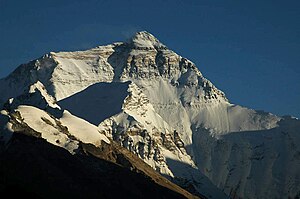
Max Hugo Weigold
(May 27, 1886 – July 9, 1973)
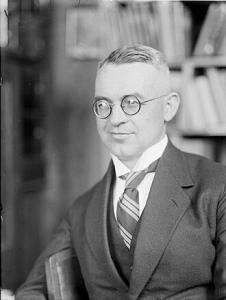
He was a German zoologist and a pioneer bird bander who worked at the Heligoland Bird Observatory, one of the world’s first bird-ringing sites. He was the first Westerner to see a live giant panda in the wild, buying a cub (which did not survive for long) while part of the Stoetzner Expedition in 1916.

Sony Creator’s Father
Kyuzaemon XIV (Nobuhide) Morita (1887-1964)
is the Father of
Akio Morita
(January 26, 1921 – October 3, 1999)
He was a Japanese entrepreneur and co-founder of Sony along with Masaru Ibuka.
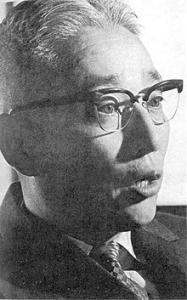
George P. Putnam
(September 7, 1887 – January 4, 1950)
He was an American publisher, writer and explorer. Known for his marriage to (and being the widower of) Amelia Earhart, he had also achieved fame as one of the most successful promoters in the United States during the 1930s.

Amelia Earhart
July 24, 1897; declared dead January 5, 1939)
She was an American aviation pioneer. On July 2, 1937, Earhart disappeared over the Pacific Ocean while attempting to become the first female pilot to circumnavigate the world. During her life, Earhart embraced celebrity culture and women’s rights, and since her disappearance, she has become a cultural icon. Earhart was the first female aviator to fly solo non-stop across the Atlantic Ocean and she set many other records; she was one of the first aviators to promote commercial air travel, wrote best-selling books about her flying experiences, and was instrumental in the formation of The Ninety-Nines, an organization for female pilots.
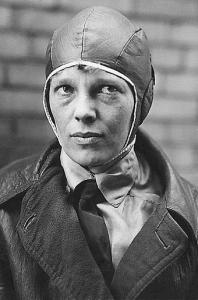
John Logie Baird
(August 13, 1888 – June 14, 1946)
He was a Scottish inventor, electrical engineer, and innovator who demonstrated the world’s first live working television system on 26 January 1926. He went on to invent the first publicly demonstrated colour television system and the first viable purely electronic colour television picture tube
In 1928 the Baird Television Development Company achieved the first transatlantic television transmission. Baird’s early technological successes and his role in the practical introduction of broadcast television for home entertainment have earned him a prominent place in television’s history.
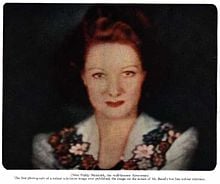
Richard E. Byrd
(October 25, 1888 – March 11, 1957)
He was an American naval officer, was a pioneering American aviator, polar explorer, and organizer of polar logistics. Aircraft flights in which he served as a navigator and expedition leader crossed the Atlantic Ocean, a segment of the Arctic Ocean, and a segment of the Antarctic Plateau. He is also known for discovering Mount Sidley, the largest dormant volcano in Antarctica.
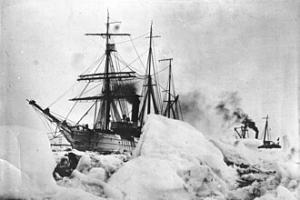
Next Time on
To Understand
What I love and How I Write About History
Hit the Link Above.
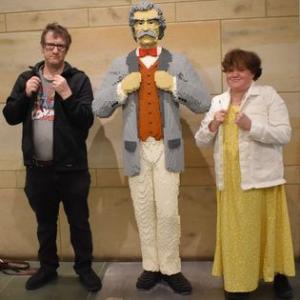
To understand about this particular series I’m writing about, please read
And to view a historical article click on


